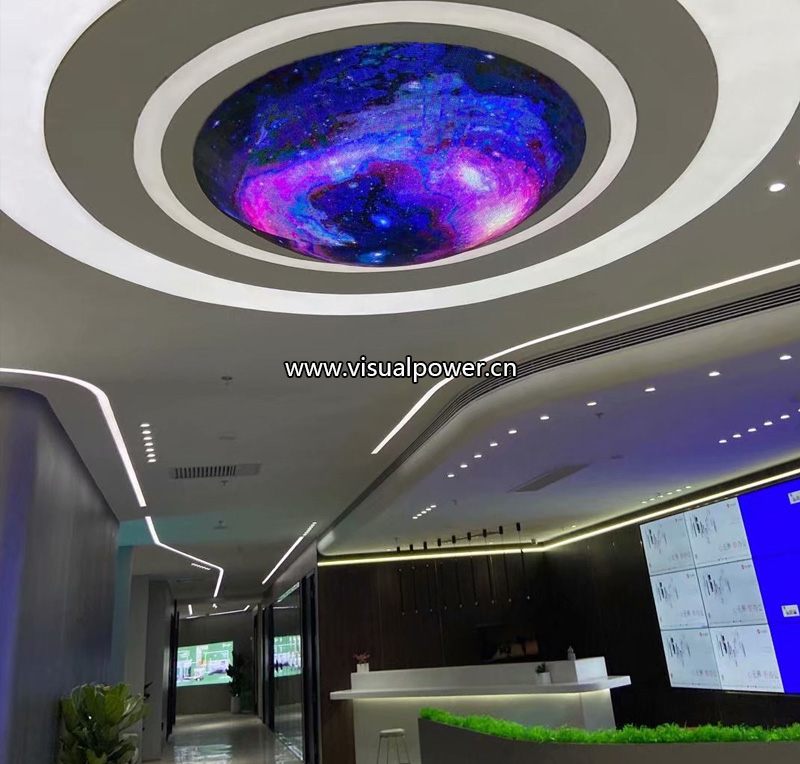categorías
- Noticias (60)
- caso de estudio (6)
I have always been a little aesthetically tired of the shape “cuadrado”. As a spatial visual worker, I experienced too many “cuadrado, regular and predictable” screens in my early years – they were like walls of information, not lying, but not romantic either.
It was not until that day that I saw my first pantalla LED redonda in my life at an art festival site. It is hung in the center of the exhibition hall, like a huge circular pupil, flickering with slowly changing patterns. It is neither a gimmick nor a lighting noise point, but truly “speaking”. En ese momento, I suddenly realized that the screen can actually be a part of emotions.
Since then, I have begun to boldly try circular leds in the project. I don’t pursue “showing off”. What I care more about is how it affects the space, people’s emotions, and the relationship between people and information. The following is a summary of my journey. I hope it can be of help to you, or at least give you some new inspiration.

Psychologically speaking, human beings have an innate affinity for the “círculo”. Our brains are more likely to accept shapes without edges. Such non-aggressive graphics naturally have a “soothing feeling”. So when a round LED display appears in the space, it doesn’t seem like “an advertisement for your attention”, but more like “a window waiting for you to approach”.
I used it in the waiting hall of a hospital – the content was not complicated. It just played the weather, clock and natural scenes on a loop. But people coming and going will unconsciously stop and look for a few seconds. Those who had been waiting anxiously before have clearly calmed down. This is not the magic of technology; it is the power of shape.
Many people ask me whether circular leds can only be used in “fancy projects” such as technology exhibitions and art galleries. I shook my head.
I once designed a circular skylight LED in an underground commercial space as the visual anchor point of the wayfinding system. When you come down the stairs, you are attracted at first sight. Unlike traditional signs that guide the way, it uses dynamic color blocks and graphics to “induce” the natural flow of people. Before that, the daily foot traffic in this area was no more than a few hundred. After installation, the heat map changed completely every day.
Value is not “holding something”, pero “using it to change behavior”.
The first reaction of many designers when facing the round LED display is “It looks good but is not easy to create content with.” I have had such concerns too.
The circular screen does challenge traditional logic. We are accustomed to composing in landscape mode and telling stories from left to right and top to bottom. But have you ever tried – to make a flower bloom from the center? Let one eye gaze in the screen? Or let the information be updated in a “clock face” rotation? All of these hold true only within a circle.
In an ancient building protection project, I used it to play a hand-drawn style restoration record video. The audience sat around, watching the slowly unfolding lines in the center, as if they had returned to the world through the eyes of an old craftsman. This narrative approach simply cannot hold true on the square screen.
I’m not a tech enthusiast, but I must remind you: If you are going to launch round LED display, be sure to consider these from the very beginning:
Diameter size: The larger it is, the greater the space for content creativity, but the complexity of hoisting and structure is also higher.
Resolution matching: Circular screens are usually spliced with custom modules rather than simply cutting a circular image onto them.
Control system compatibility: Not all controllers are compatible with non-standard ratios. Visual synchronization should be planned in advance.
Maintenance method: The later maintenance methods are different. Some can only be disassembled from the back, while others can be maintained from the front. It is essential to confirm this clearly.
Among the hardware suppliers I have worked with, there is a team called visualpower that has done this quite meticulously. Their modular structure concept has indeed saved me a lot of effort in the splicing of irregular screens.
But don’t expect suppliers to solve everything. You still have to lead the project with the mindset of content planning. Technology serves expression, not the protagonist.
Draw the spatial dynamic map and see at what Angle the audience meets it. Is it the background? Focus? Interactive medium?
Write something you want to say and then imagine how it turns into visual dynamic content.
Close your eyes and imagine for ten seconds. What kind of shock do you hope this screen will bring to people? Warm? Or some kind of emotional memory?
After completing these three steps, you will probably know the answer.
A few weeks ago, I came across a round LED with a diameter of 1.5 meters in a public square in Chengdu. It was embedded in the center of a fountain. During the day, it is almost inconspicuous. At night, a circle of soft light rose and fell like breathing. Children are playing with water beside it, couples are leaning against it to watch the light change, and the elderly are walking slowly around it…
No one noticed that it was an LED screen. It is like a part of the space, as if it was supposed to be there originally.
This is what a round LED display should look like.